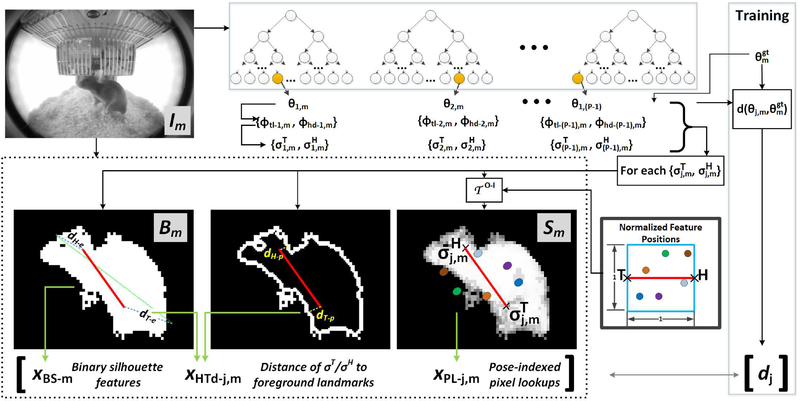Fig. 5.
A graphical illustration of the procedure of generating the feature vector used in the ensemble model. The image is fed to the structured forest. The resulting proposals are projected onto the segmentation map. The solid red line shows an example projection for one pose-proposal though different proposals will have different projections. Aside from the binary silhouette features, head/tail distance measures are computed along with pose-indexed pixel lookups. During training, the target value is the computed distance for each pose proposal from the ground-truth pose. Also during training, the ground-truth pose is used as a training sample with a distance of 0.

